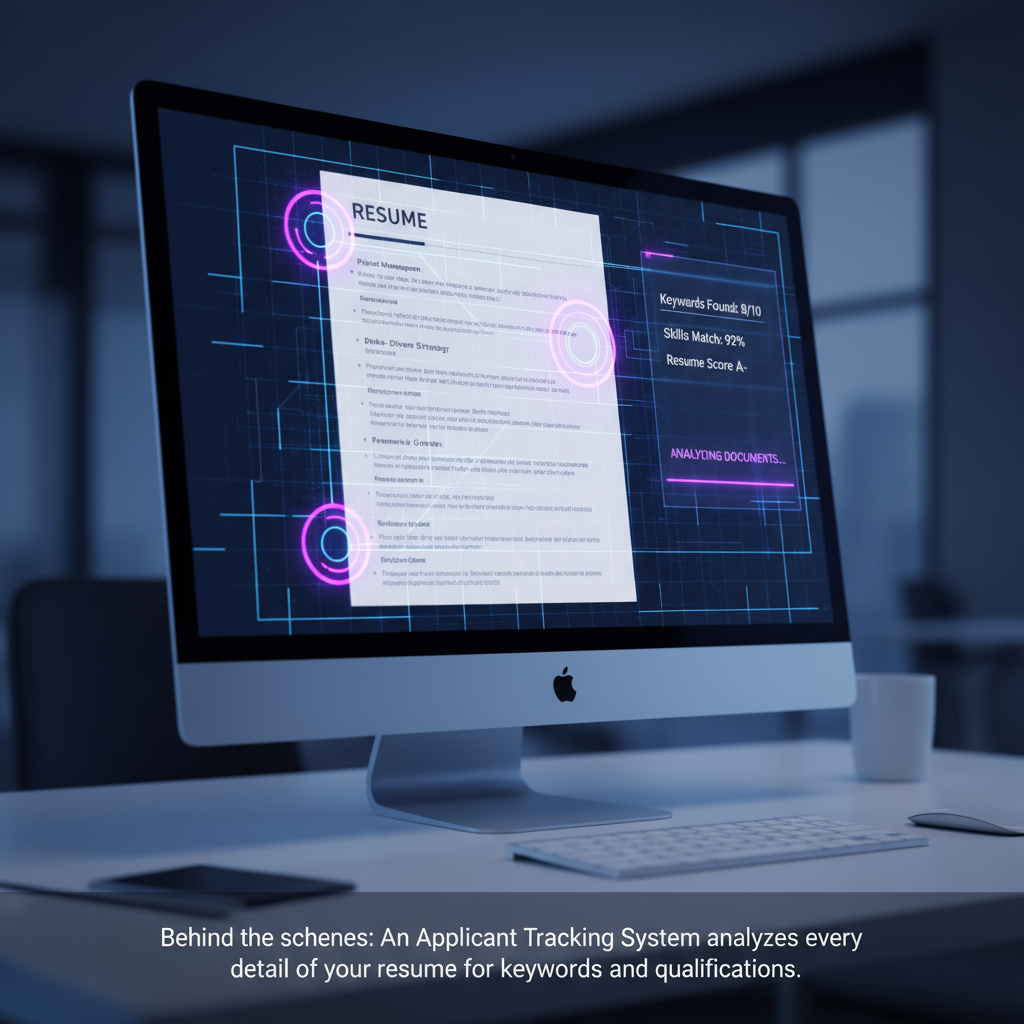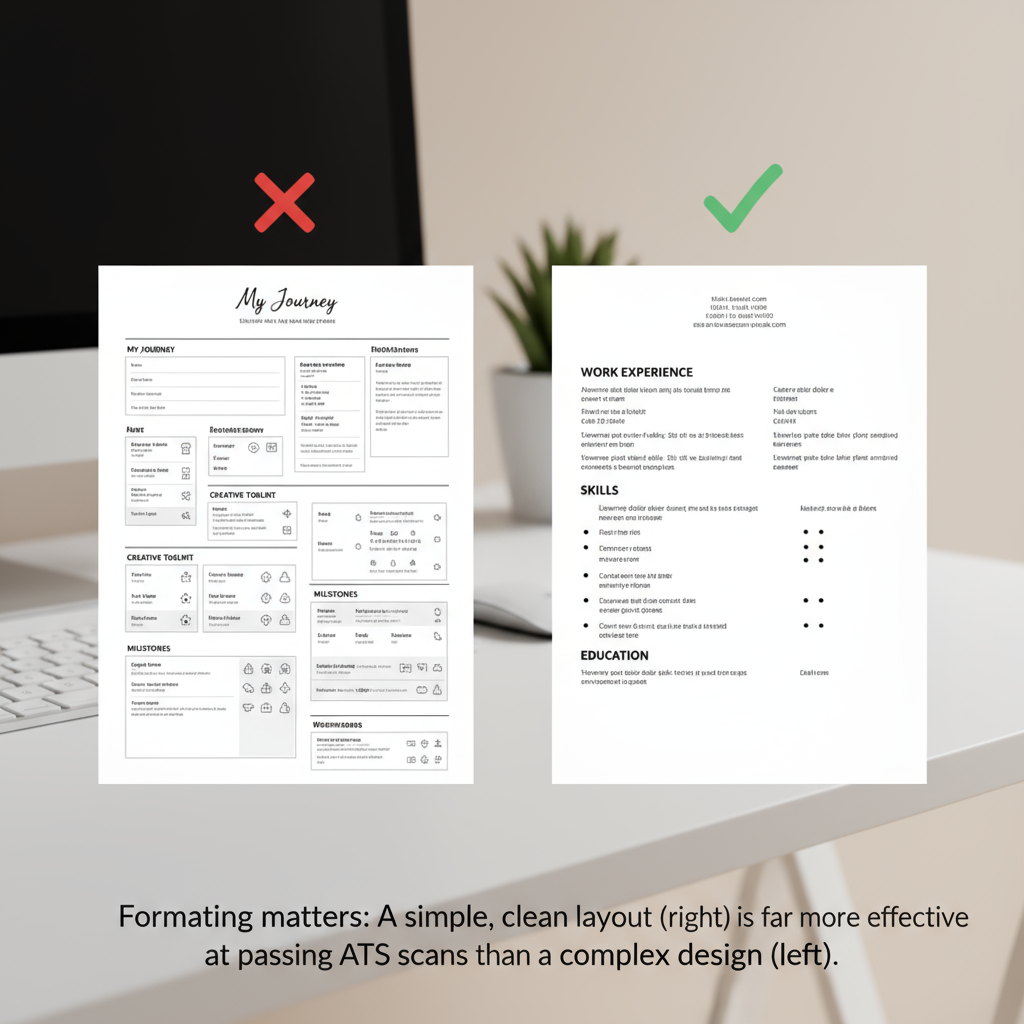Ever feel like you’re sending your carefully crafted resume into a black hole? You spend hours tailoring it, only to be met with silence. The culprit is often an automated system that discards your application before a human ever sees it. It’s a frustrating reality of the modern job hunt. But what if you could create a resume that consistently sails past the bots and lands in front of a hiring manager? That’s exactly what we’re going to do right now.
Key Takeaways: Why an AI-Optimized Resume Wins
- Increases Visibility: Your resume gets past the initial Applicant Tracking System (ATS) filters, dramatically increasing the chances a recruiter will actually read it.
- Saves You Time: Stop wasting hours on applications that go nowhere. A properly optimized resume is a template for success you can adapt quickly.
- Boosts Interview Calls: By speaking the language of both AI and humans, your resume clearly communicates your value, leading to more interview requests.
- Highlights Your Best Self: This process forces you to be clear, concise, and results-oriented, making your qualifications shine for any reader, human or machine.

Why Your Resume Gets Rejected Before a Human Sees It
Let's pull back the curtain. Most companies today use Applicant Tracking Systems (ATS) to manage the flood of applications they receive. Think of it as a gatekeeper. And that gatekeeper is getting smarter. With recent data showing that over 80% of companies now use AI for initial screening, it’s no longer just about matching a few keywords. These systems use Natural Language Processing (NLP) to understand context, skills, and experience in a much more sophisticated way.
If your resume isn’t formatted for these systems or doesn’t contain the right information presented clearly, it gets triaged out. It’s not personal; it’s programmatic. Your goal isn’t to "trick" the bot, but to give it the exact information it needs to say, "Yes, this person is a match."
The Human + AI Handshake: How to Write for Both
The best resumes don't just appease the machine; they resonate with the human on the other side. The secret is that both AI screeners and busy hiring managers value the same thing: clarity. The AI needs structured, easy-to-parse data. The human, who might spend only seven seconds on the first scan, needs to see your impact immediately.
Focusing on clarity makes your resume dual-purpose. Here’s a micro-transformation:
- Before: "Responsible for managing social media accounts."
- After: "Grew organic social media engagement by 45% in 6 months by launching a data-driven content strategy across Instagram and TikTok."
The "after" version is packed with keywords (social media, engagement, content strategy, Instagram), contains a quantifiable metric (45% in 6 months), and tells a compelling story for a human reader. That’s the handshake.
Ready to Build a Winning Resume?
Don't leave it to chance. Use a professionally designed, ATS-ready template that takes the guesswork out of formatting. Get started with our Resume Builder now.
Your AI-Proofing Framework: The 5-Point Resume Audit
Use this checklist to audit your resume and ensure it's ready for modern hiring systems. Let’s stress-test your draft and turn it into a powerful tool.
1. Score Your Keyword and Skill Alignment
The AI is scanning your resume to see how well it matches the job description. Your first step is to mirror the language of the role. Print out the job description and highlight the key skills, tools, and qualifications. Are those exact terms in your resume? Don't just list them; weave them into your experience bullets.
- Hard Skills: Software (e.g., Salesforce, Figma), programming languages (e.g., Python, Java), technical abilities (e.g., SEO Audits, Financial Modeling).
- Soft Skills: Leadership, communication, project management, problem-solving. Show, don't just tell, by using them in context.
2. Triage Your Formatting for Scannability
Complex designs, tables, and columns can confuse an ATS. While a beautiful design might look great, it can render your resume unreadable to the software. Stick to a clean, professional format.
- Use standard section headers: "Work Experience," "Education," "Skills."
- Choose a universal, easy-to-read font like Arial, Calibri, or Helvetica.
- Avoid putting crucial information in the header or footer, as some systems ignore these areas.
- Use standard round bullet points.

3. Sequence and Quantify Your Achievements
Generic statements make you look like every other candidate. The fastest way to stand out to both AI and humans is with numbers. Quantifying your experience proves your impact. Scour your history for anything you can measure.
- Before: "Improved team efficiency."
- After: "Implemented a new project management workflow that reduced project delivery times by 15%."
This provides context and demonstrates a tangible business outcome, a signal that both algorithms and recruiters are trained to look for.
4. Select the Right File Format
This is a simple but critical step. Unless the application specifically asks for a PDF, a .docx file is often the safest bet, as it's universally parsable by ATS. PDFs can sometimes cause issues, especially if they are image-based or have complex formatting. When in doubt, keep it simple with a Word document. If you must use a PDF, ensure the text is selectable and not an image.
5. Stress-Test Your Draft with AI Tools
Before you hit submit, run your resume through a simulator. While our Resume Builder creates an ATS-friendly foundation, specialized tools can score it against a specific job description.
- Livesume: Your starting point. Our builder ensures your format is clean and parsable from the very beginning.
- Jobscan: A popular tool for comparing your resume directly against a job description. It gives you a match score and highlights missing keywords.
- Teal: Offers a great Chrome extension that helps you track jobs and identify keywords directly on company websites.
Using one of these tools can provide that final 10% of polish that makes all the difference.
Frequently Asked Questions About AI and Resumes
How long should my resume be?
Aim for one page if you have less than 10 years of experience. For seasoned professionals, two pages is acceptable. AI doesn't have a strict page limit, but human recruiters prefer conciseness.
Should I use a creative or a traditional resume format?
For most corporate jobs, a traditional, chronological format is the safest and most ATS-friendly option. Creative formats should only be used for design-centric roles where a digital portfolio is also expected, and even then, have a plain-text version ready.
Is it okay to lie or exaggerate keywords to pass the ATS?
Absolutely not. The ATS is just the first step. A human will review your resume next, and you'll have to speak to your experience in an interview. Honesty and relevance are always the best policy.
How do I handle career gaps on an AI-friendly resume?
Address them briefly and professionally. You can use a short sentence in your cover letter or, if relevant, list experiences like "Professional Development" or "Sabbatical for Family Care" with dates to show what you were doing during that time.
Does the file name of my resume matter?
Yes, it does. Keep it professional and clear. A good format is "FirstName-LastName-Resume.pdf" or "FirstName-LastName-JobTitle-Resume.docx". It helps recruiters stay organized.
Should I include a resume summary or objective?
A professional summary is generally more effective than an objective. Use 2-3 sentences at the top to highlight your key qualifications and career goals. This serves as a great spot to place high-value keywords right at the beginning.
Turn Your Draft Into a Hiring Signal
An AI-proof resume isn't about finding secret hacks. It's about clarity, relevance, and structure. By focusing on these fundamentals, you create a document that satisfies the initial AI screening and provides a compelling case to the hiring manager.
Here’s your plan:
- Choose a Clean Template: Start with a solid foundation from our Resume Builder.
- Audit Your Content: Run through the 5-point framework above for each job you apply for. Pay special attention to keyword alignment and quantifiable achievements.
- Create a Master Version: Keep a comprehensive "master resume" with all your accomplishments, which you can then tailor for each specific application in under 10 minutes.
Stop sending your resume into the void. Take control of your job search by building a resume that works for you, opening doors to the interviews you deserve.